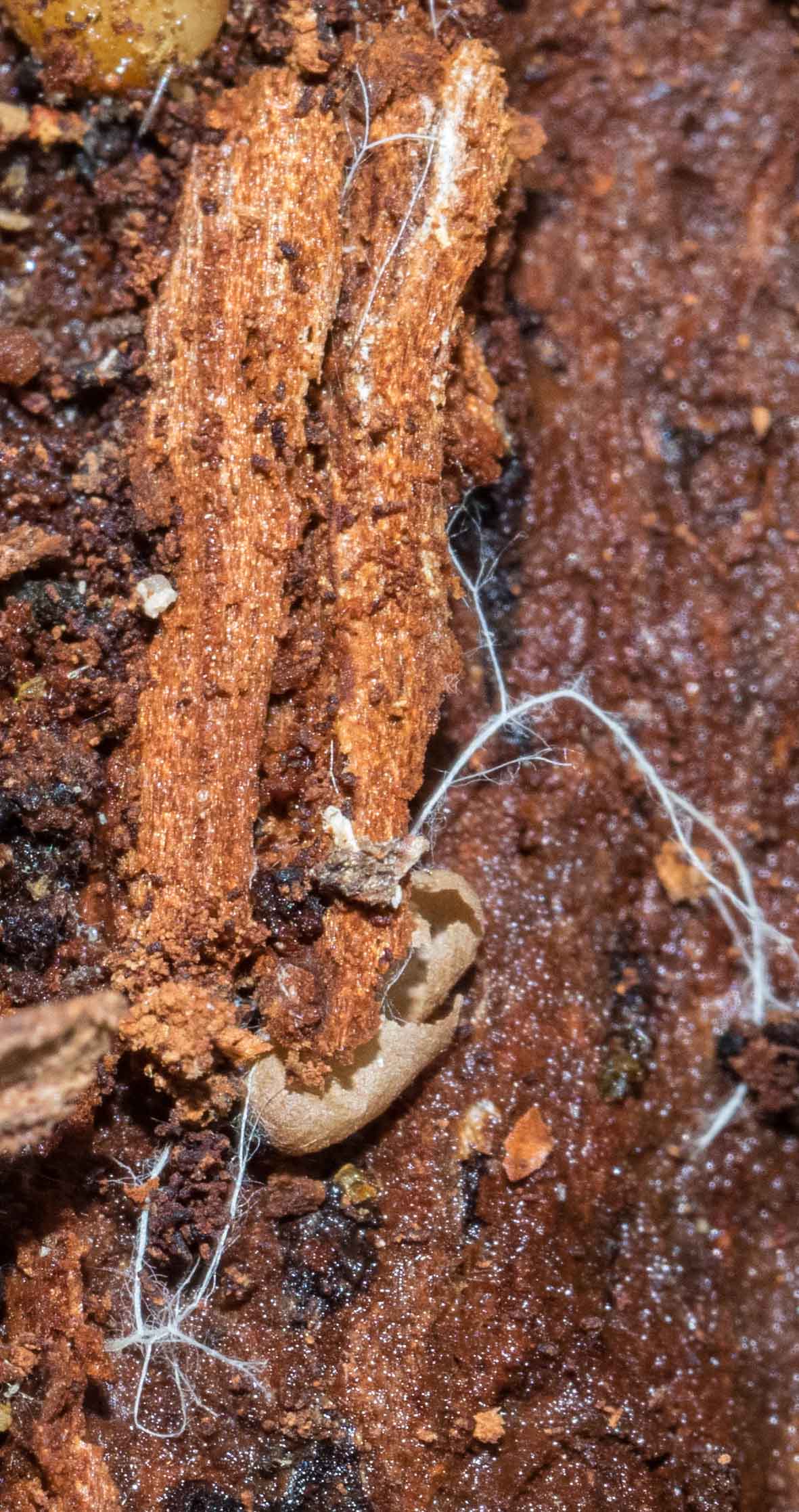A rotten log - ecosystem in miniature
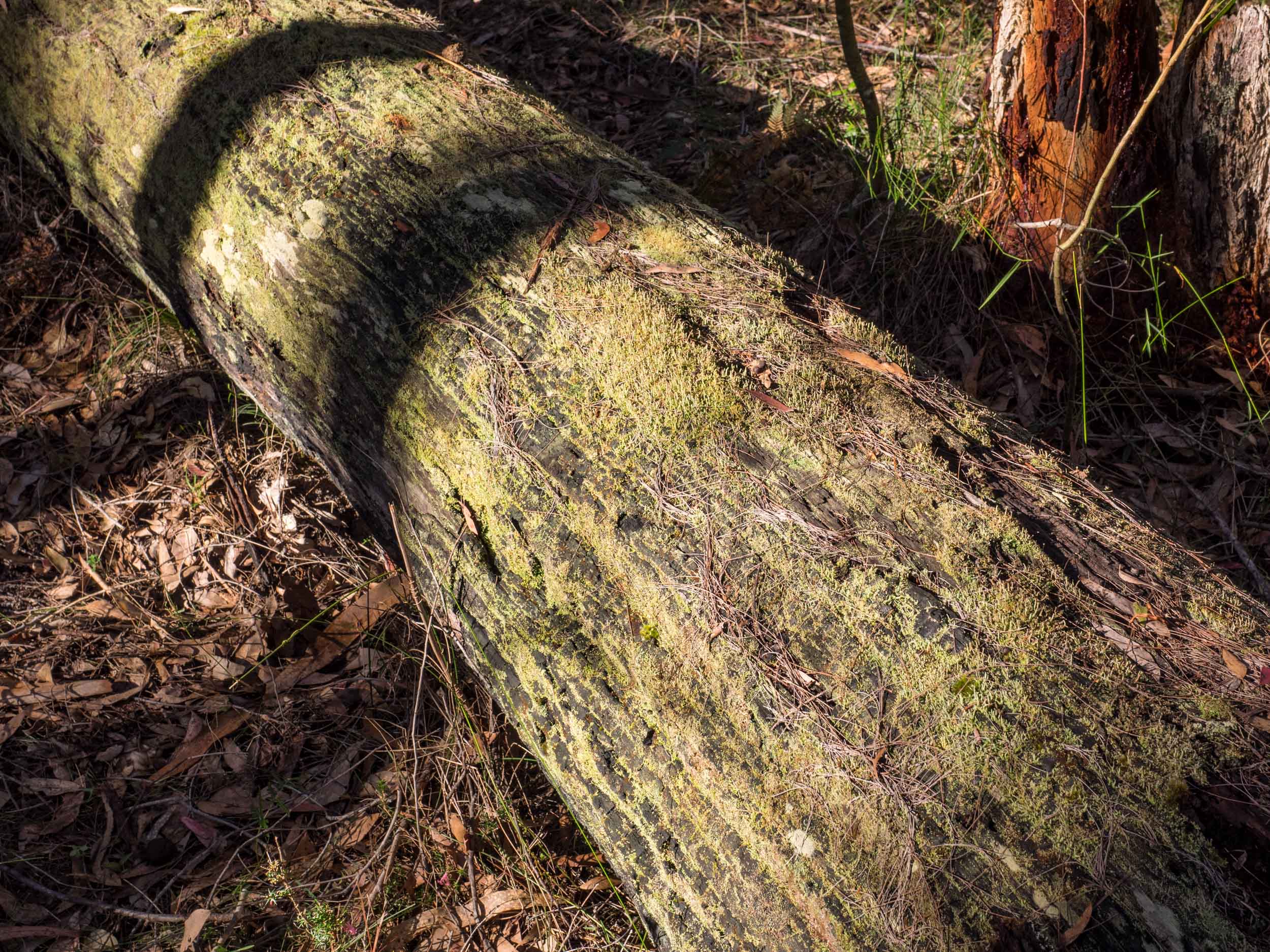
Returning a Tree to Whence it Came
There are 18 dead standing eucalypts (out of a total of ~750 trees) on our home block. Some of these are relatively intact but most have lost the crown and much of the trunk.
Dead trees like this are a key resource in the forest, providing valuable roosting and nesting sites for a range of birds and mammals.
Over the years, several trees like the one on the left have fallen over. We have left these large trunks on the ground, allowing them to decay in situ.
The decomposition of a fallen tree is a wonderful example of recycling.
The molecules that were taken from the soil and air during the hundred plus years of growth of a large eucalypt like this are returned to the environment.
There they will support the growth of new trees and many other organisms.
Breakdown of a large tree trunk is a slow process in our cool-temperate southern climate. Several logs that have been lying on our forest floor for over 14 years still look reasonably intact from the outside - although they are actually 'rotten to the core'.
Recycling of the molecules locked up in the wood requires the action of a complex community of interacting organisms - a protracted process.
So what's going on in there? I sought to identify some of the players by delving into our oldest rotten logs.
Lichen and Moss - the Beginning
The surface of these logs is virtually covered by a carpet of mosses and lichens.

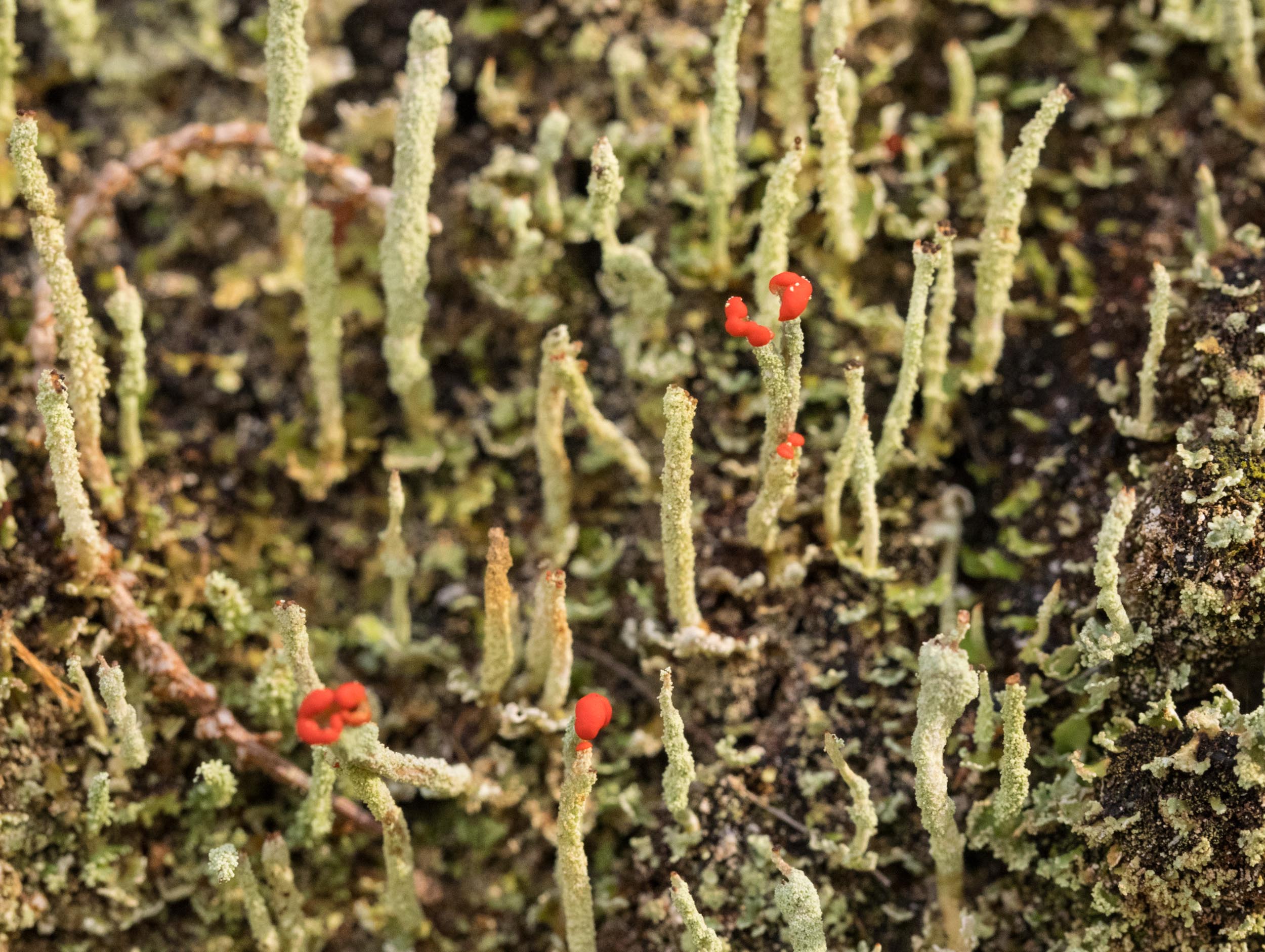
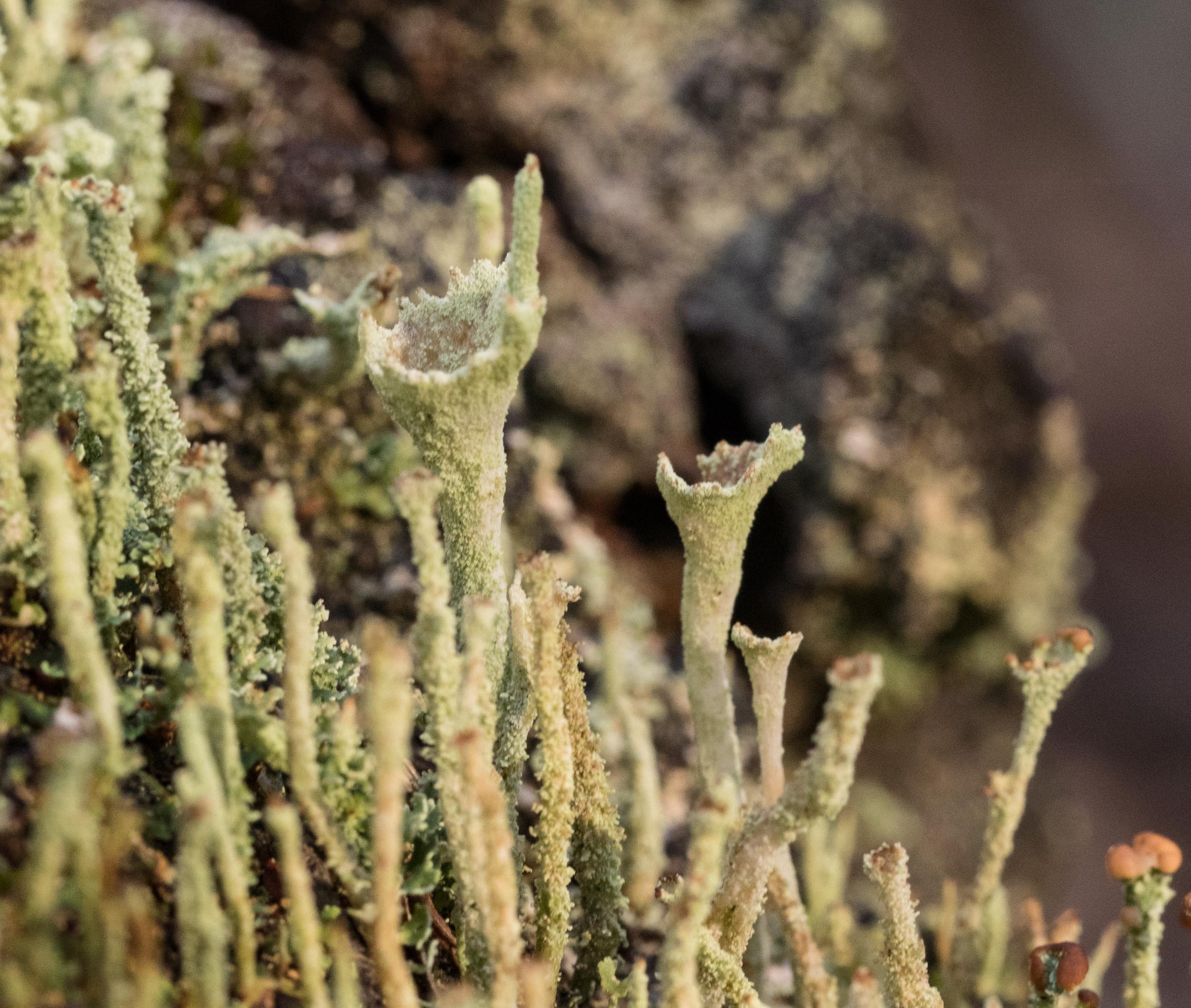

Mosses and lichens help to maintain ideal conditions for decomposition inside the log by reducing evaporative water loss from the surface. Lichens also fix nitrogen from the air and this moves into the interior of the log when a patch of lichen dies.
The Rot Starts with Fungus
The primary agents of decomposition of the log are fungi. These secrete enzymes, which break down the macromolecules lignin and cellulose into simple sugars.
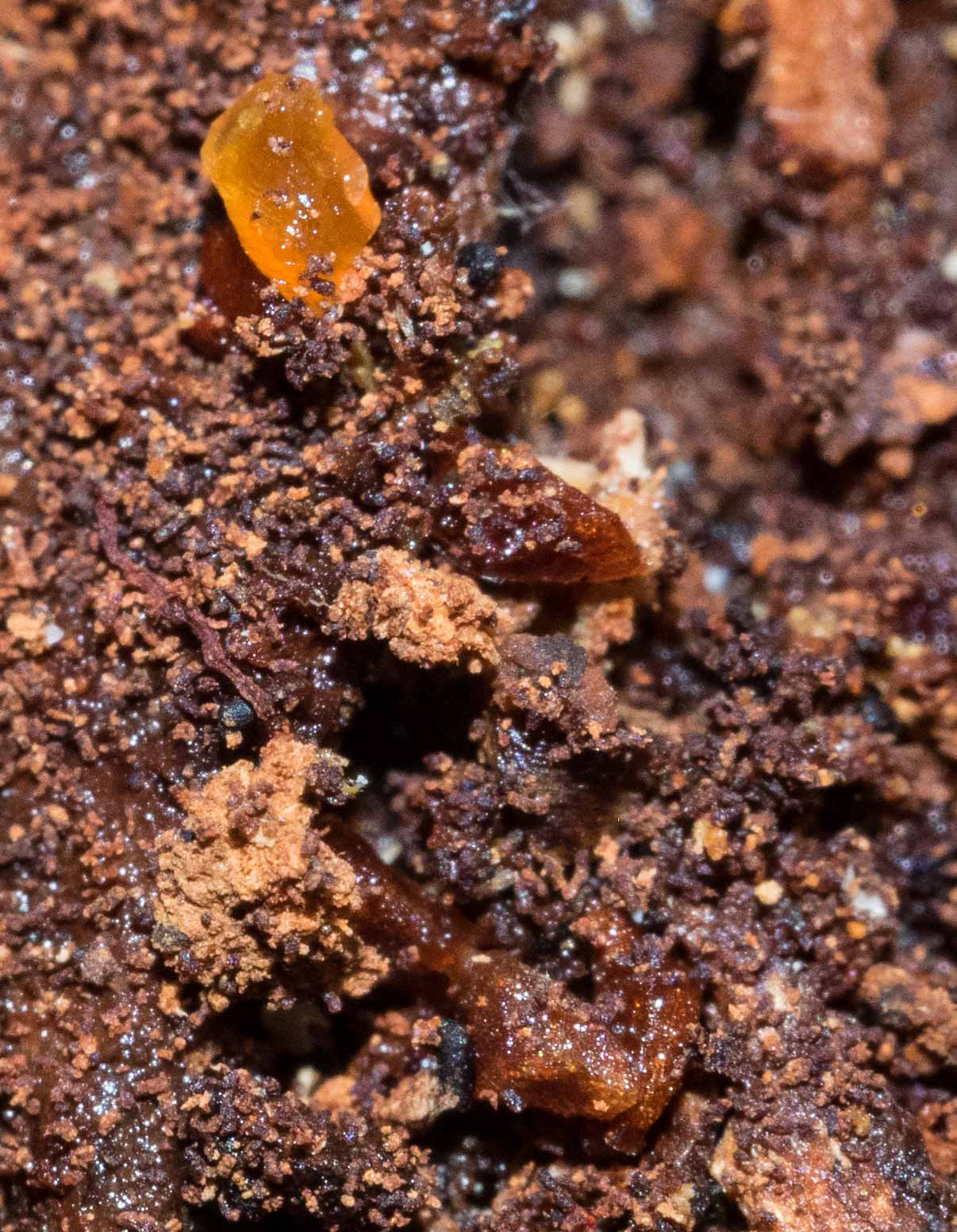
The fungi use these nutrients to support their growth.
When fungal fruiting bodies die, these nutrients are released into the log for uptake by other organisms.
The First Wave of Animals Enter
The initial breakdown brought about by the fungi softens up the wood to allow entry of small invertebrates, including arthropods such as isopod crustaceans (slaters) and small beetles. The beetles feed on fungal spores and other organic matter in the log. The food chain begins...
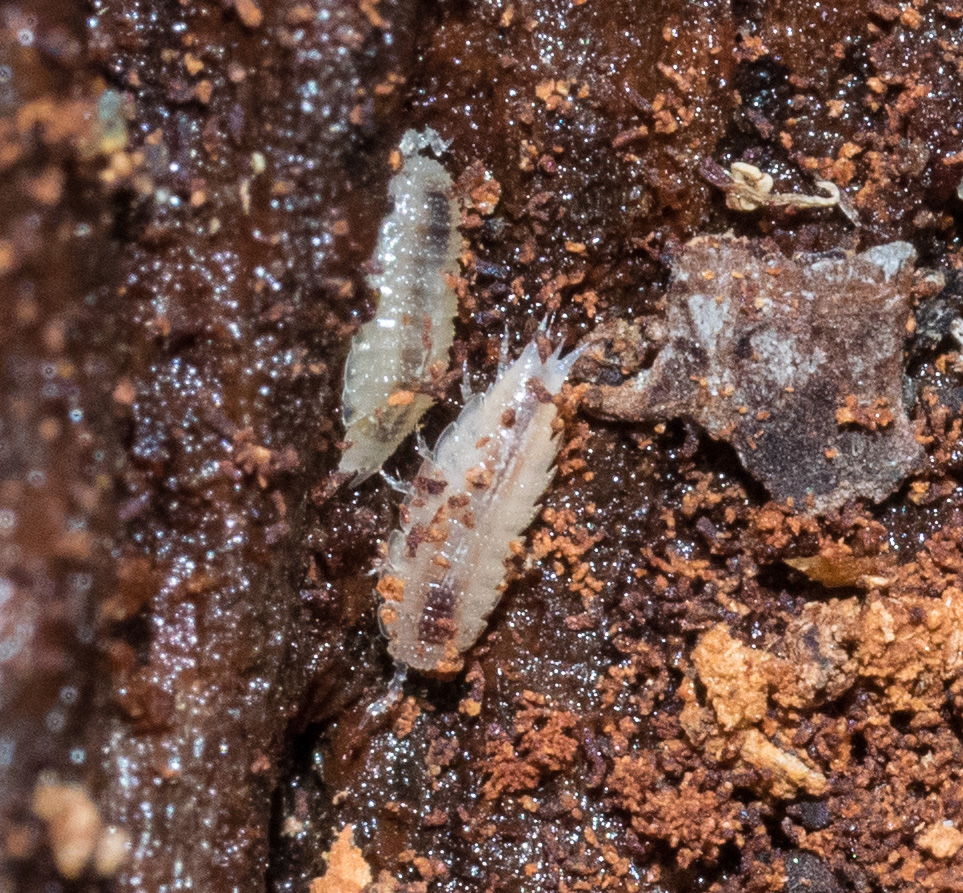
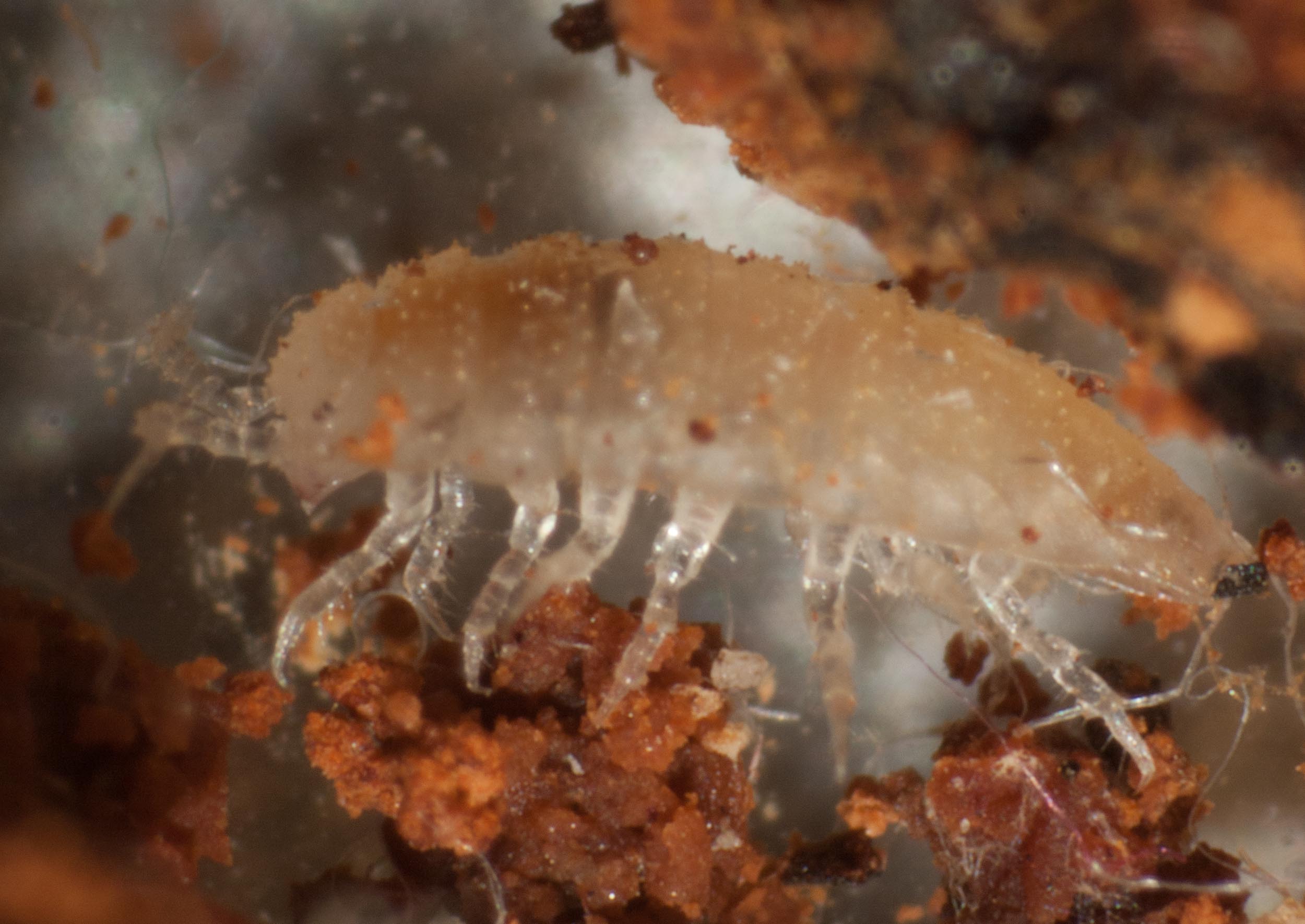
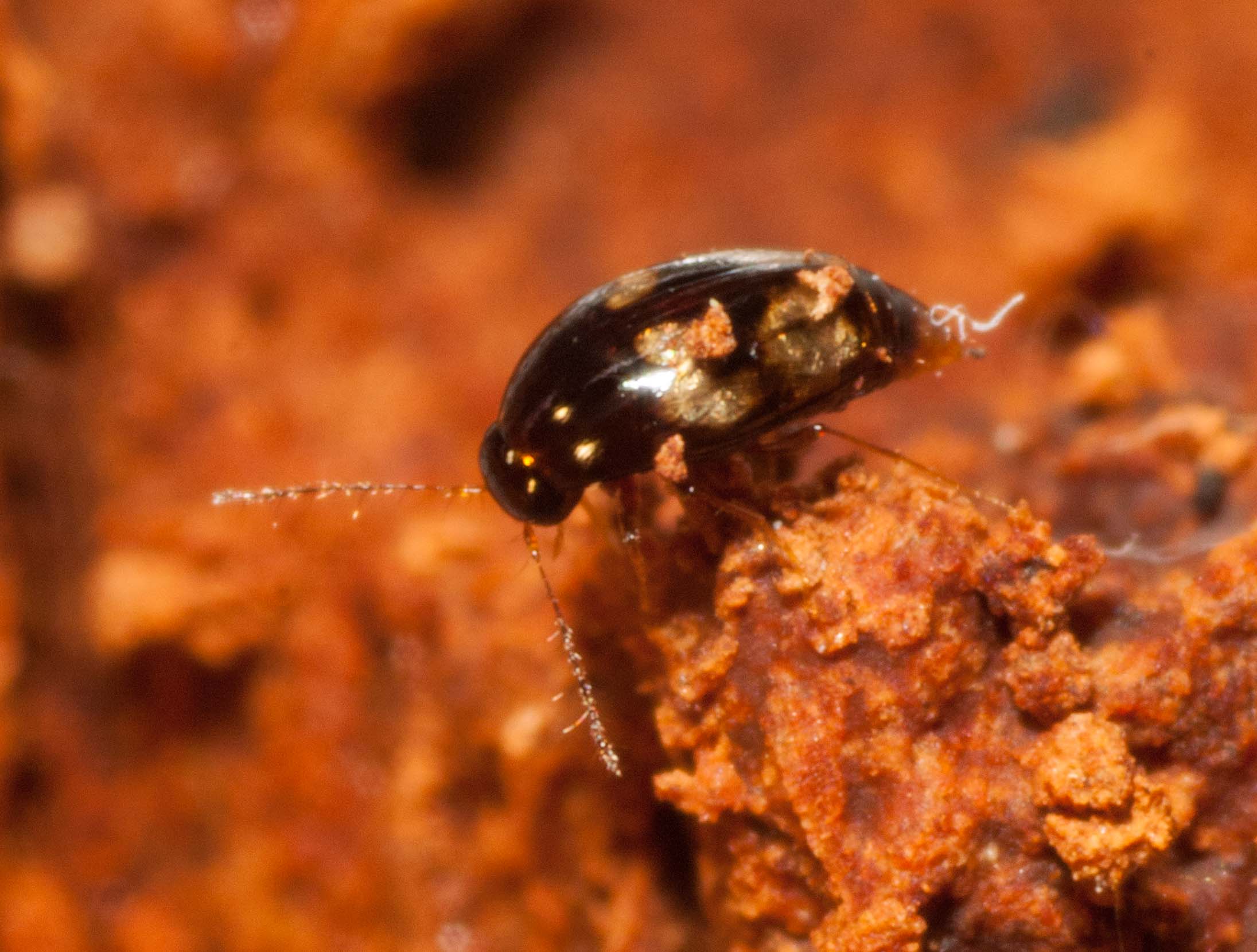
The slaters eat fungal mycelia, the softened wood and each other! The round balls of their faeces are evident throughout the log. Slaters process a vast amount of material but use little of it for their own nutrition. They therefore serve a vital role in producing humus to enrich the soil.
Space for Larger Creatures
As the rot continues, larger invertebrates - such as millipedes - gain access to the log. A ready food source in the form of fungi is available to these animals.
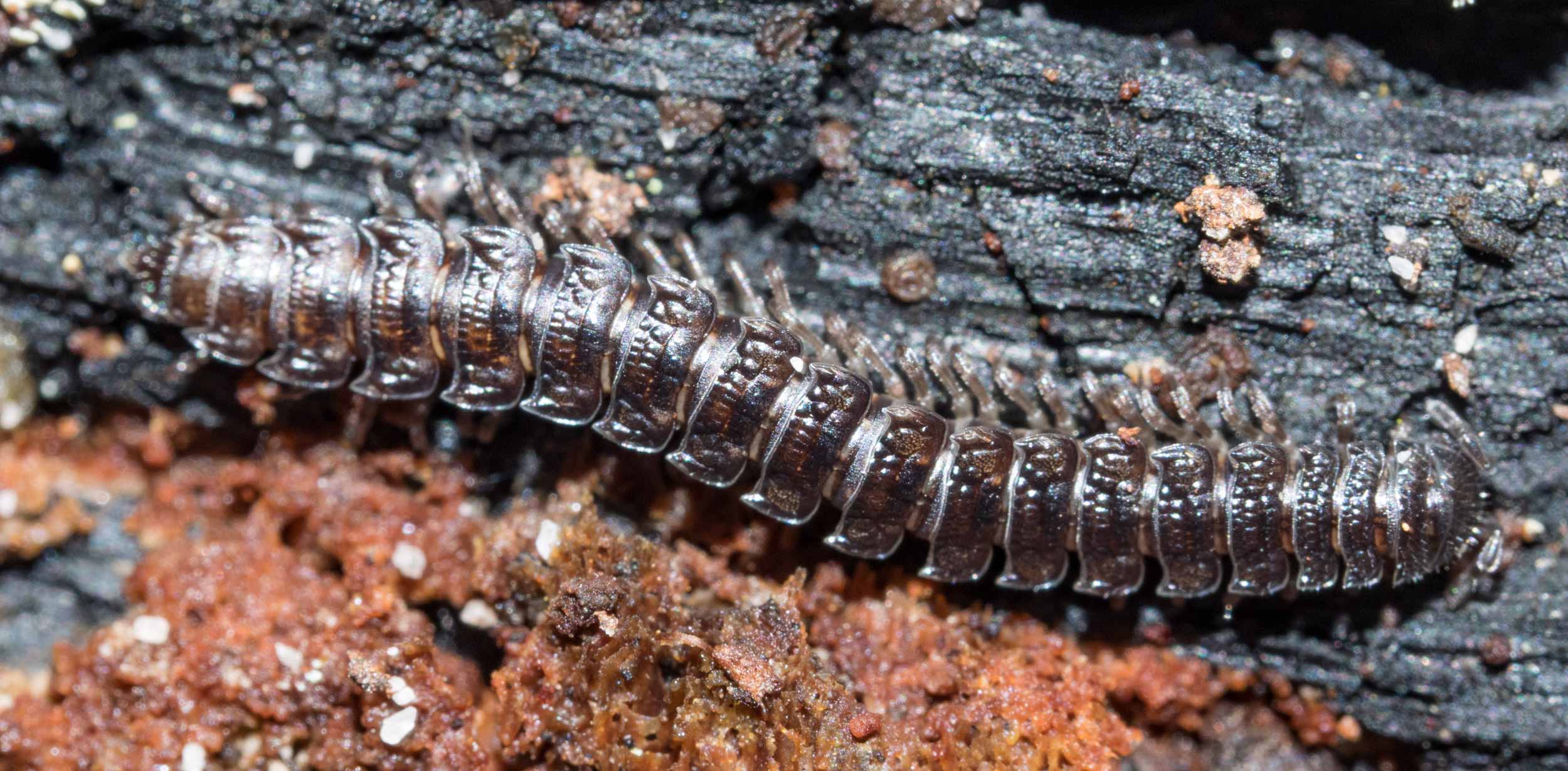
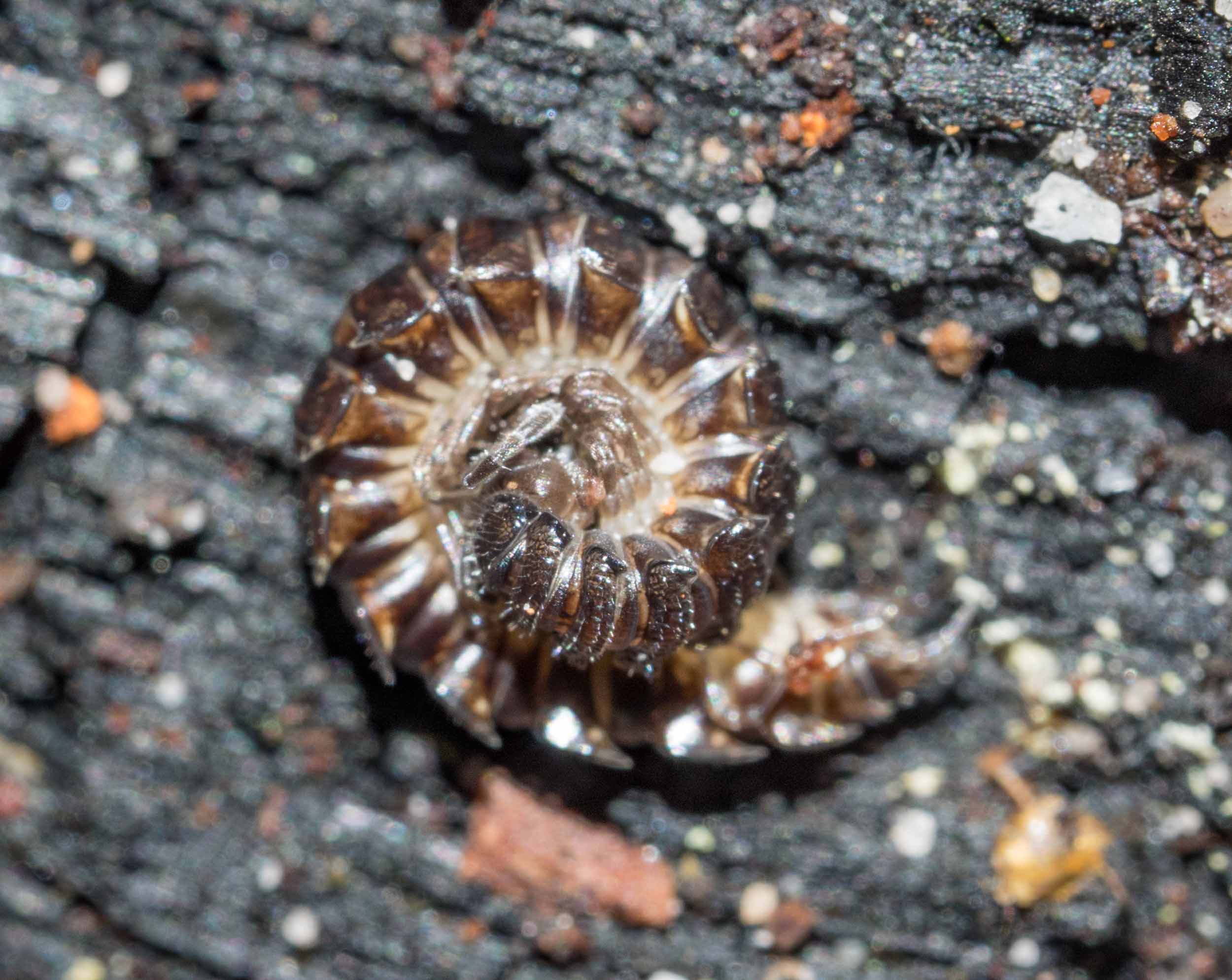
Room for a Colony
Ants are found in virtually every type of habitat and rotten logs are no exception. A colony of ants (Heteroponera imbellis) has made its home here. They continue the process of wood breakdown by building a maze of galleries.

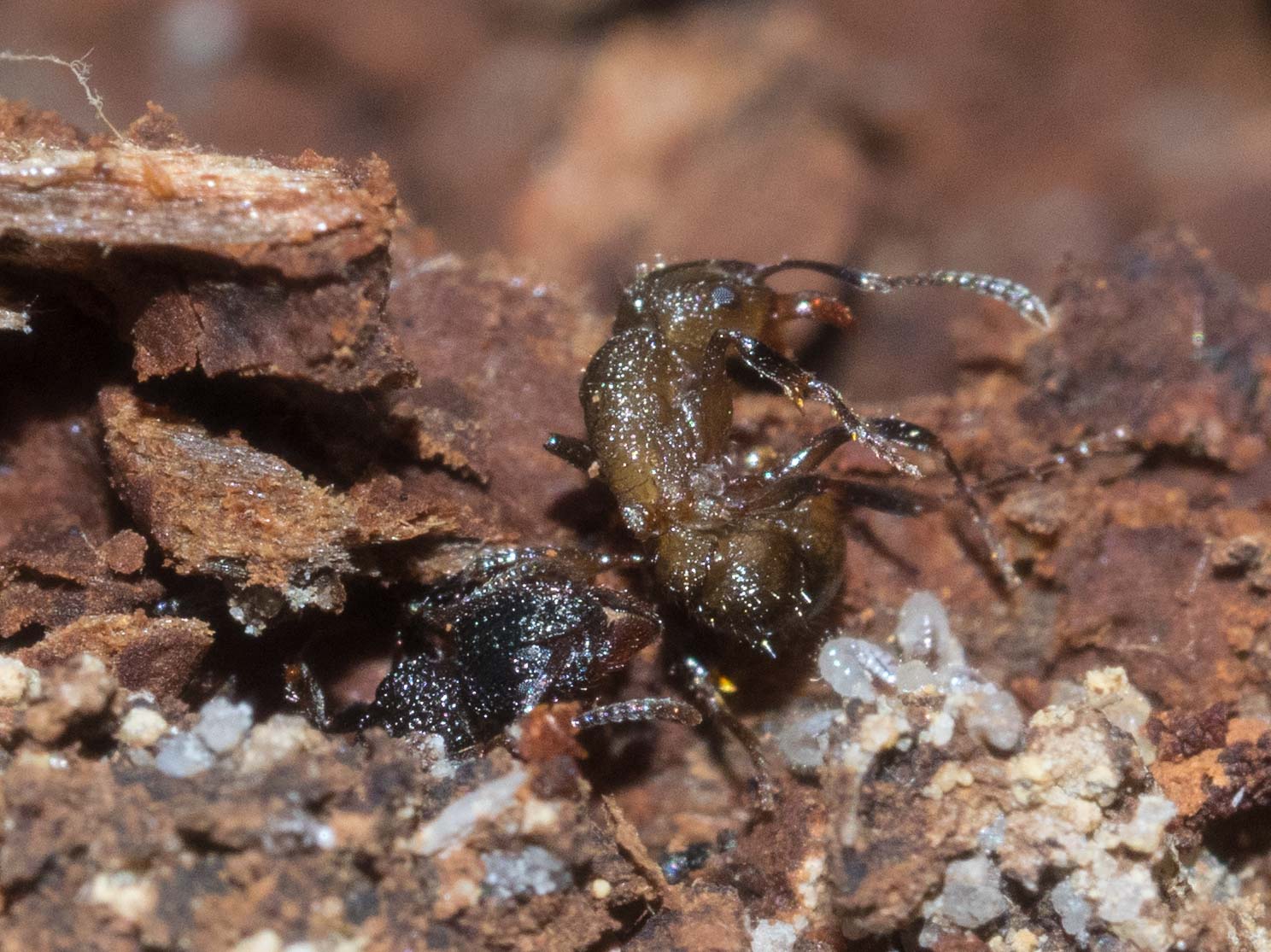

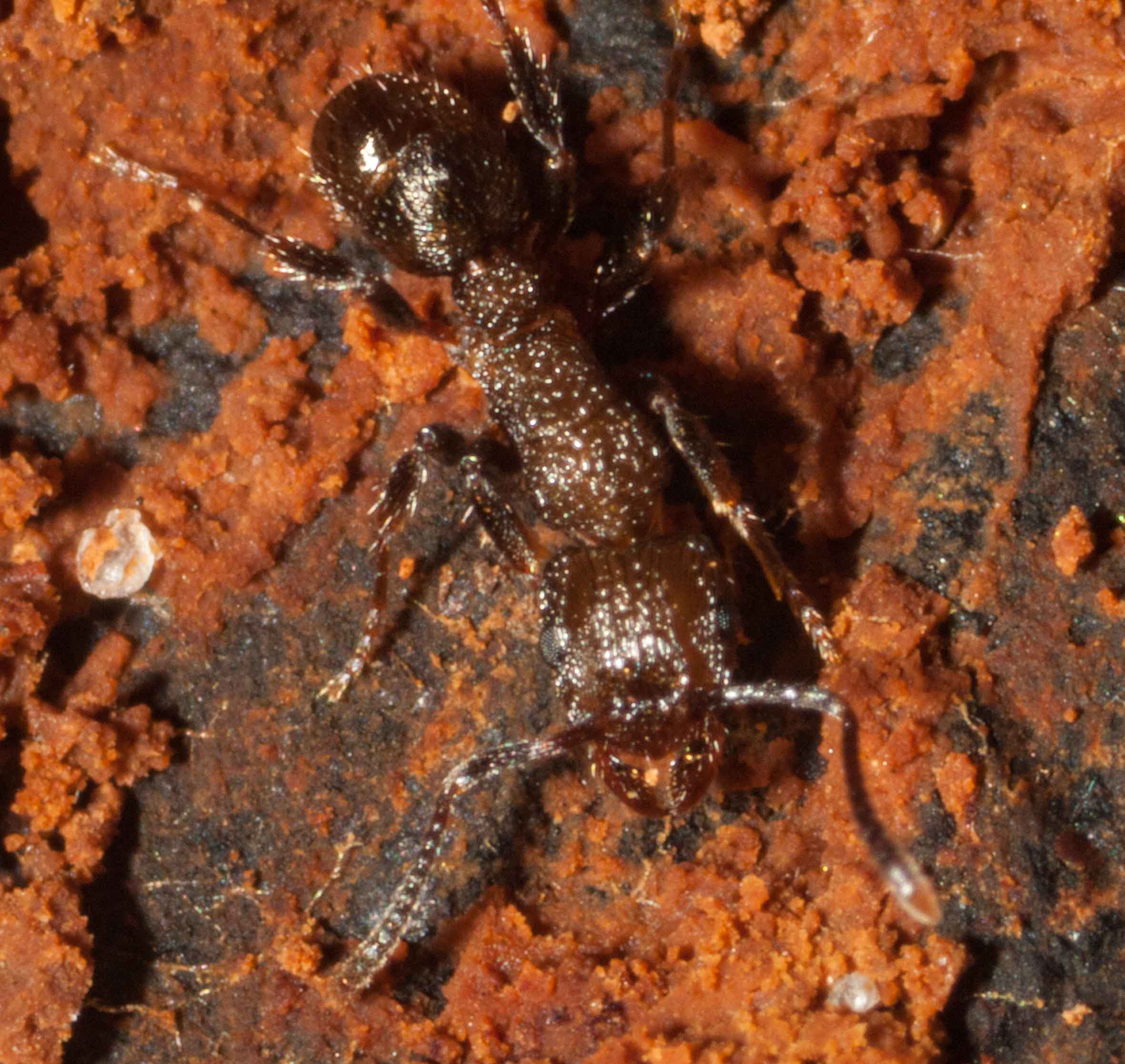
Completing the Food Chain
It's now time for entry of a top-level predator! The centipede Cormocephalus aurantiipes fits the bill very nicely. There is a nice selection of prey items for it in the log now.
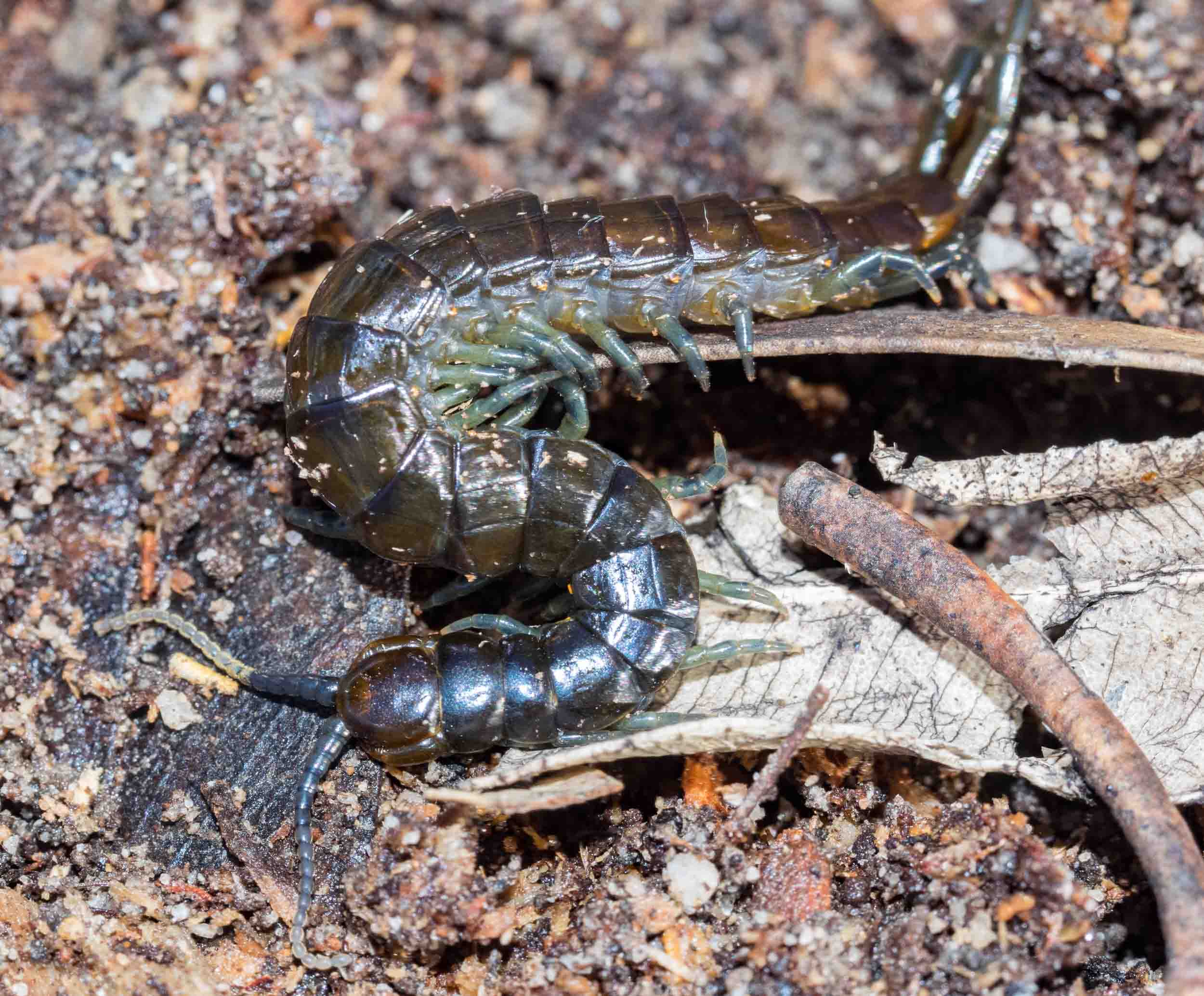
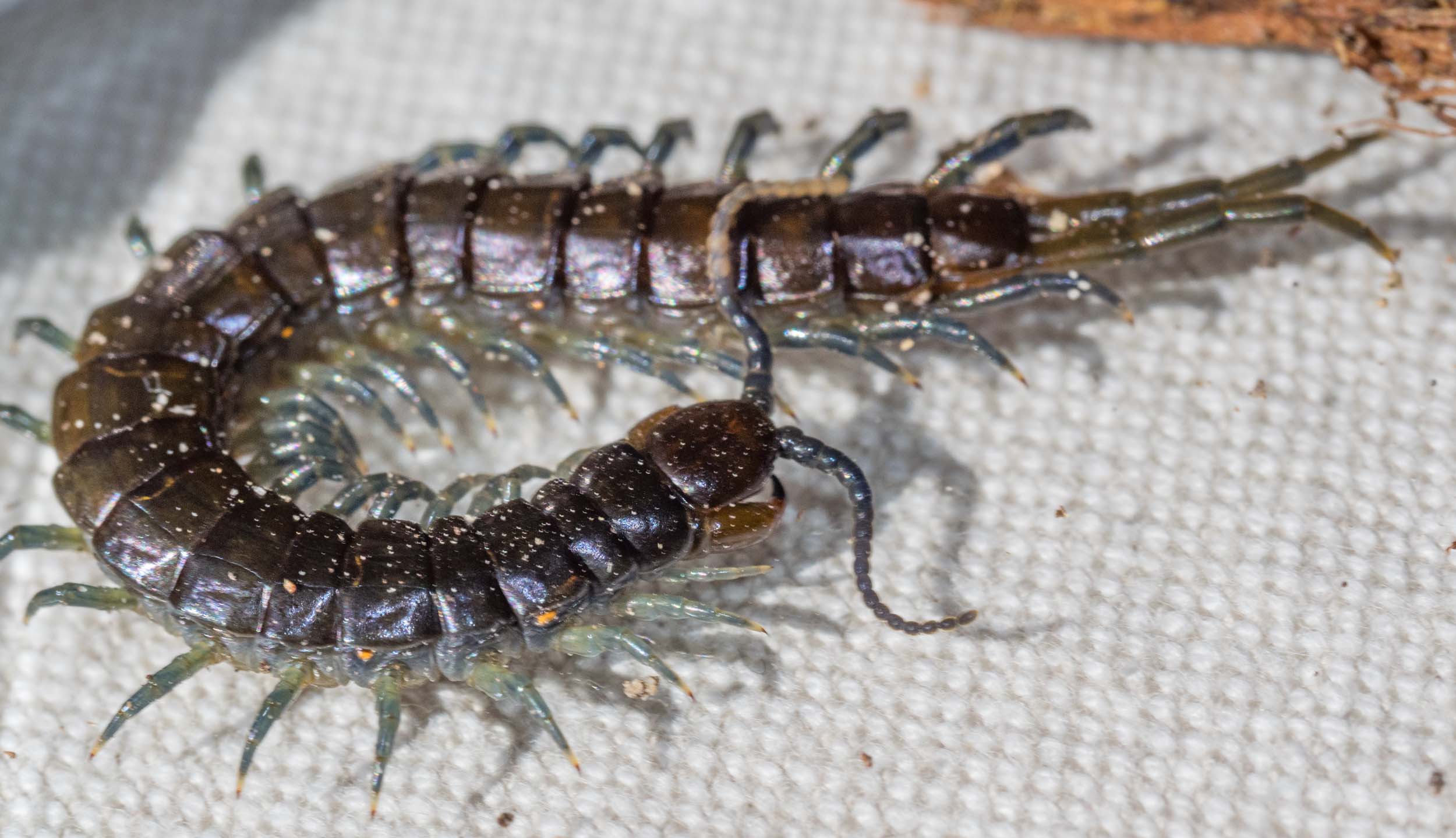
Springtails Fill in the Spaces
From one of the largest denizens of the rotting log to one of the smallest - Collembolans, also know as Springtails. The species I found - Isotomurus sp. - is about 0.7mm long. Collembolans are found in virtually every environment on earth and often in huge numbers.
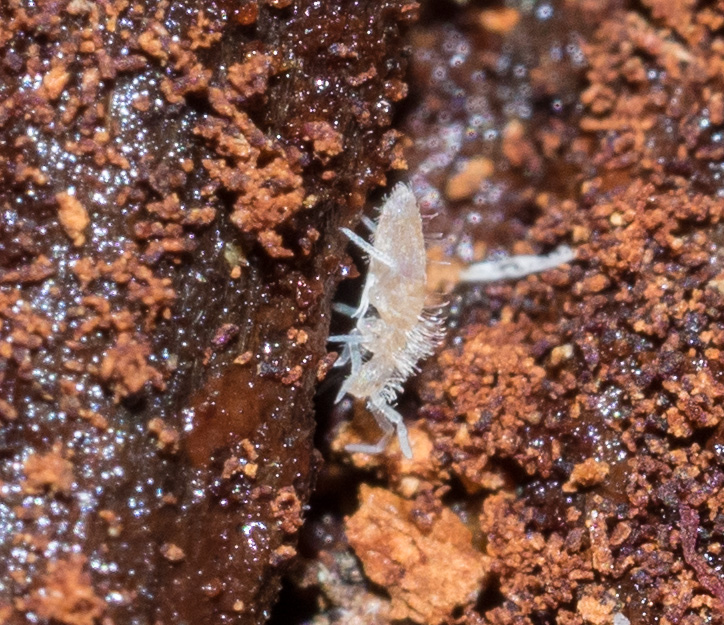
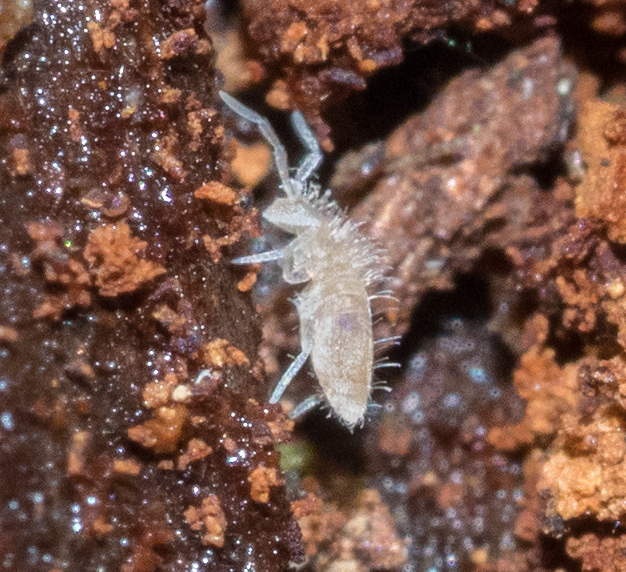
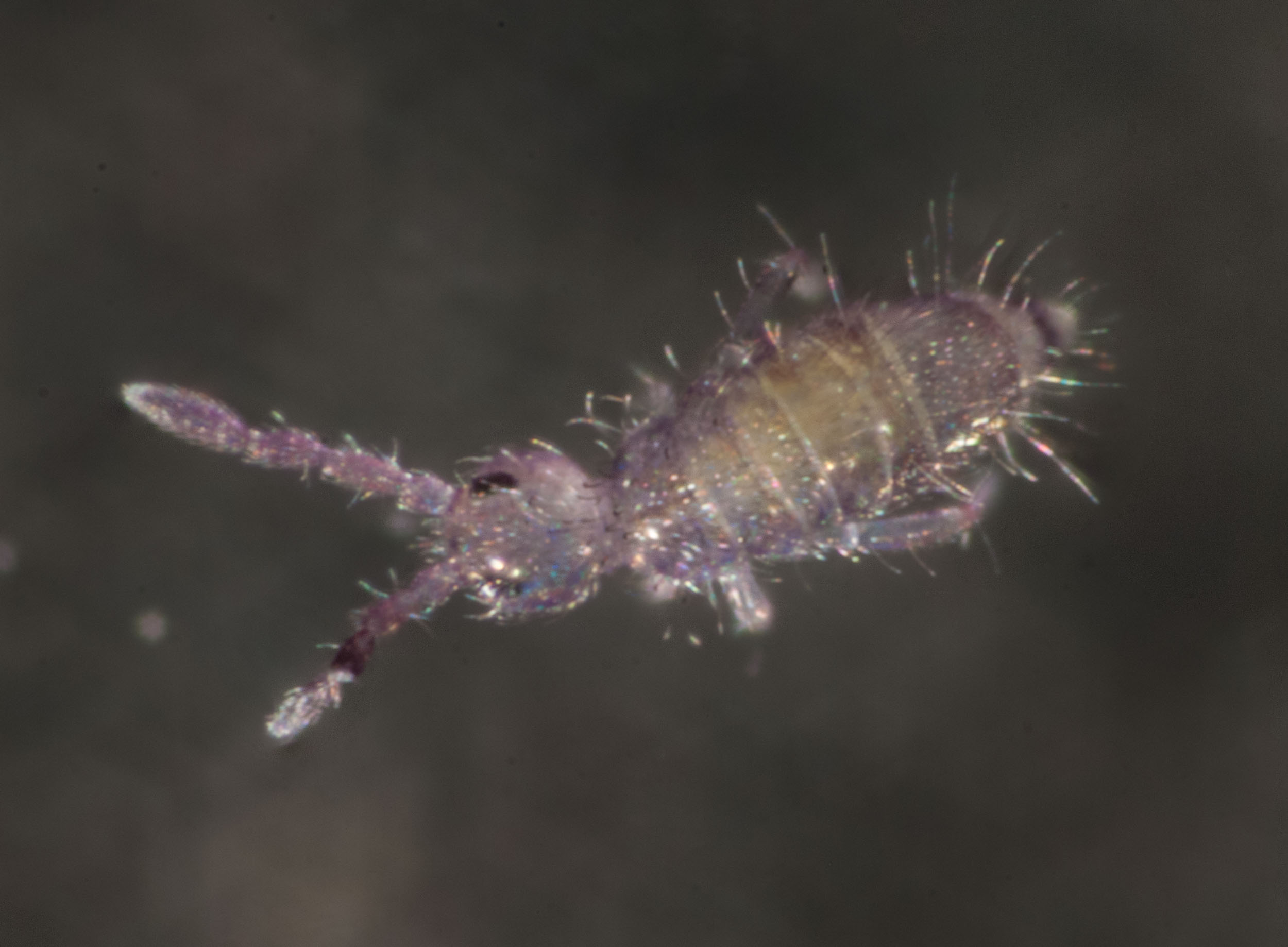
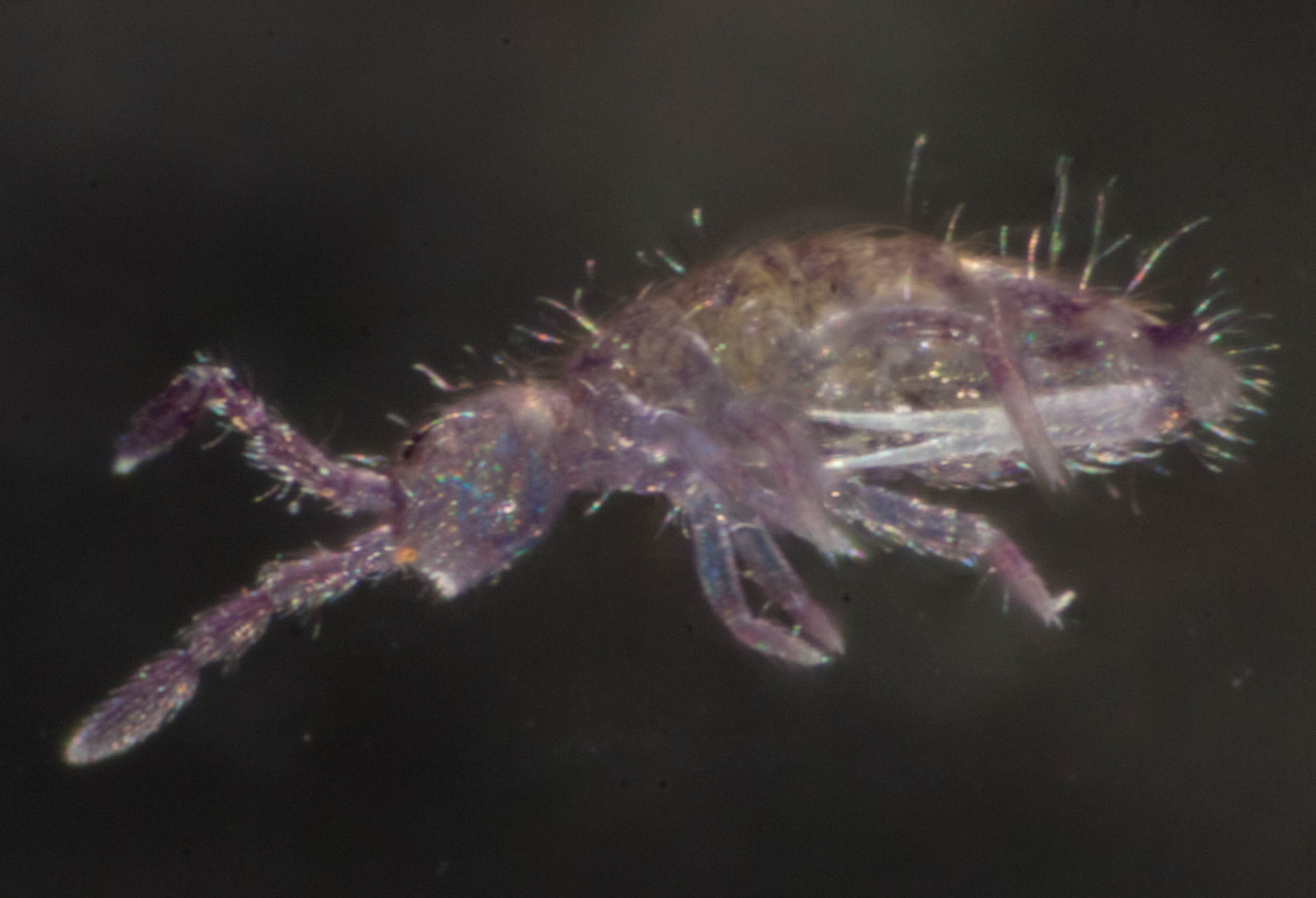
Rotten Logs Serve Multiple Functions
Rotten logs provide refuge to hibernating animals over winter. I discovered this Southern Weasel Skink (Saproscincus mustelinus) when I pried the bark off this log.
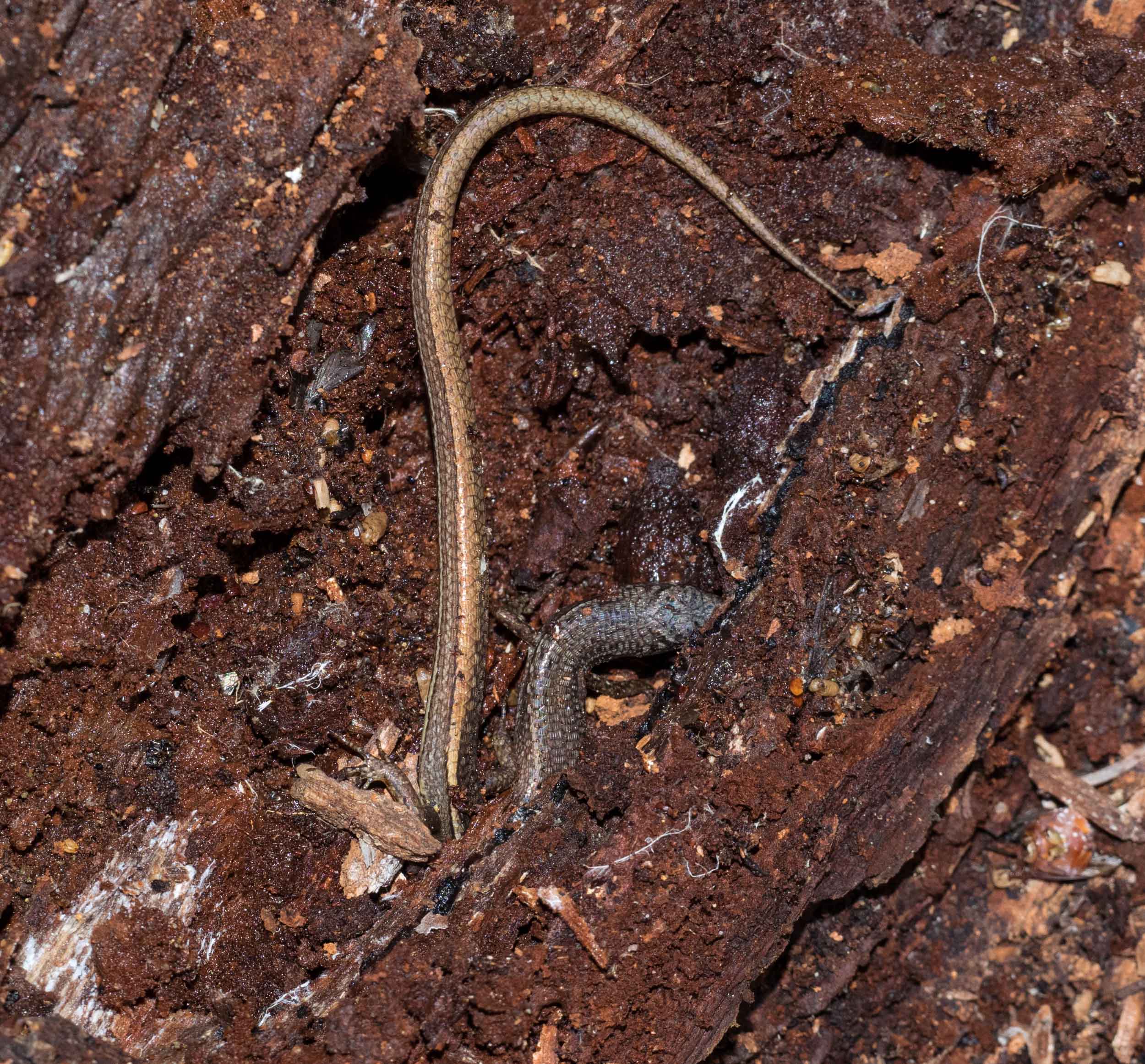
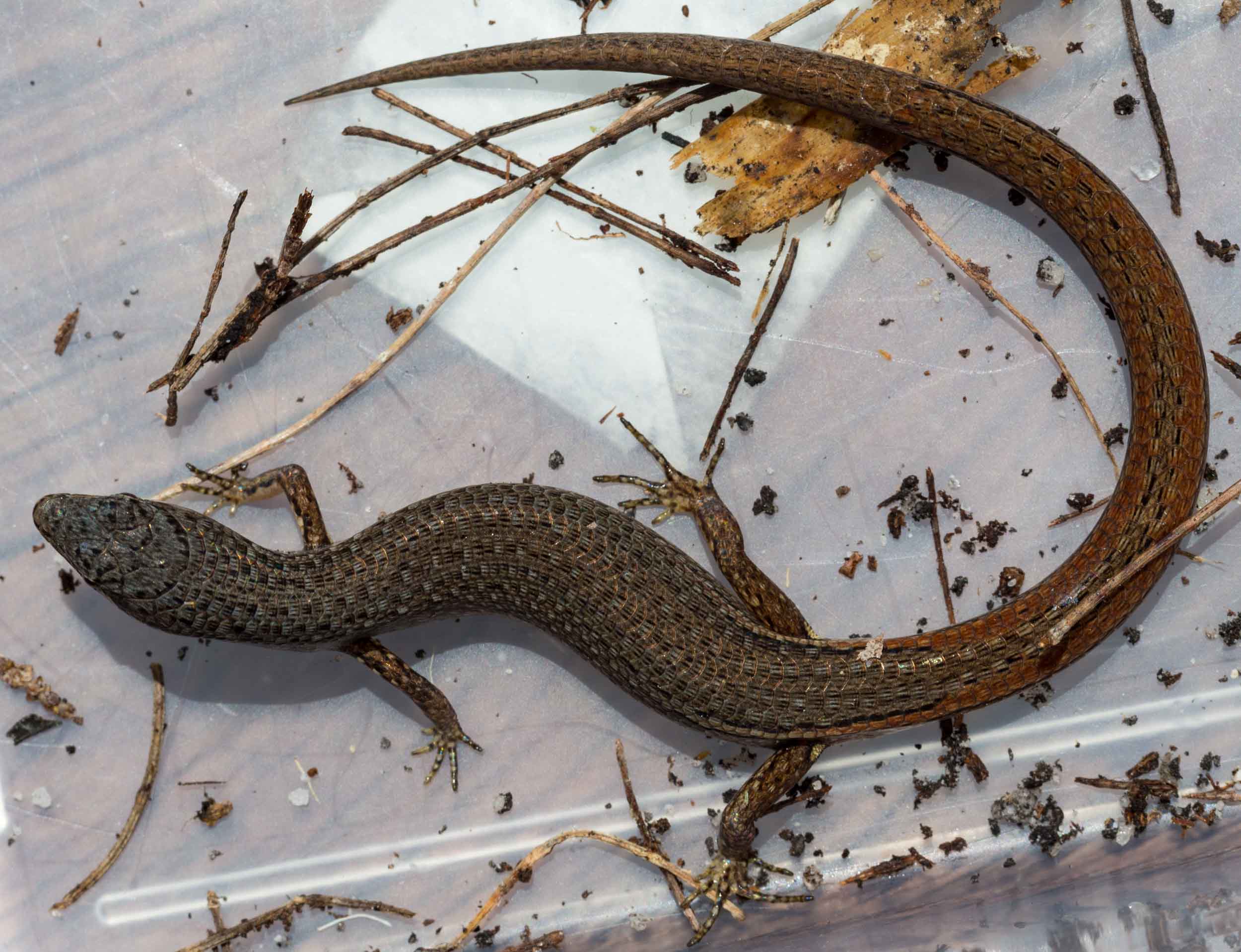
The End is But a Beginning
Eventually this and other fallen logs will rot away entirely. But during the process a load of nutrients will have been returned to the soil. And countless animals will have lived out their lives in this special ecosystem.



